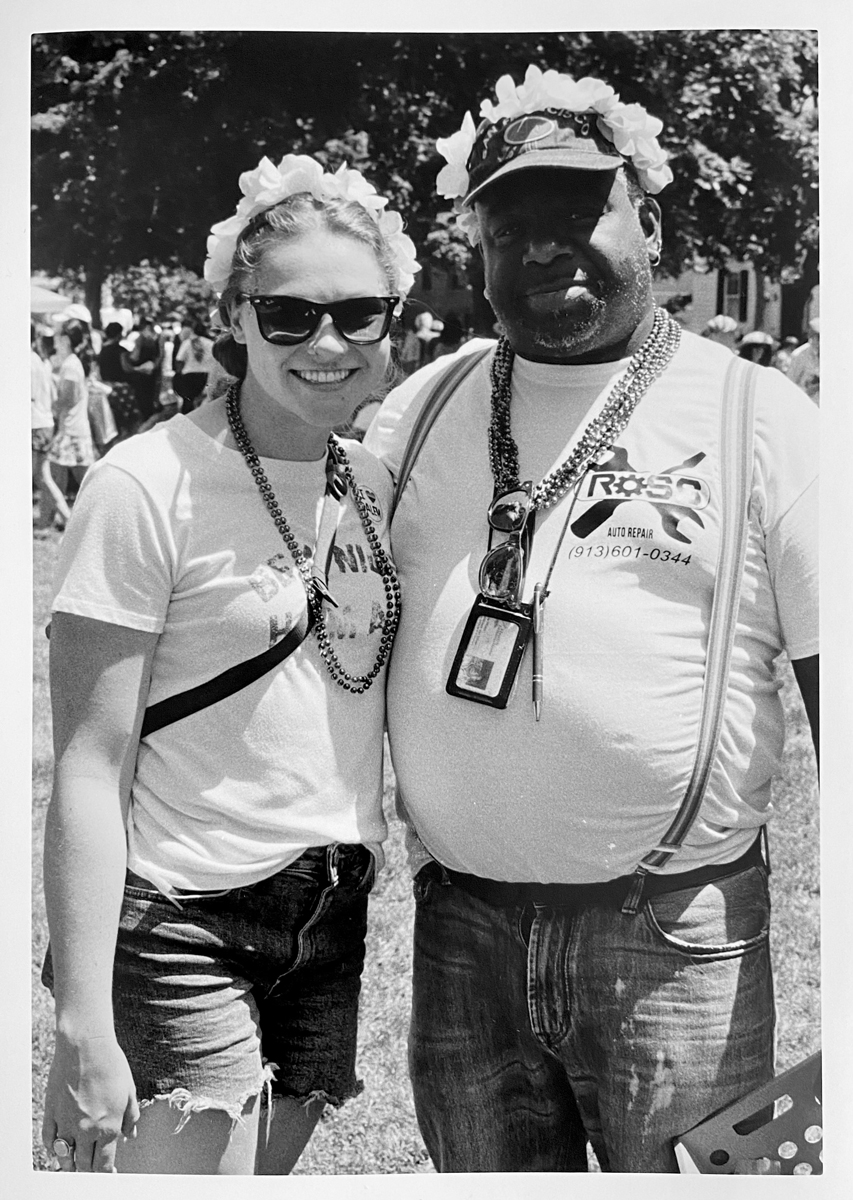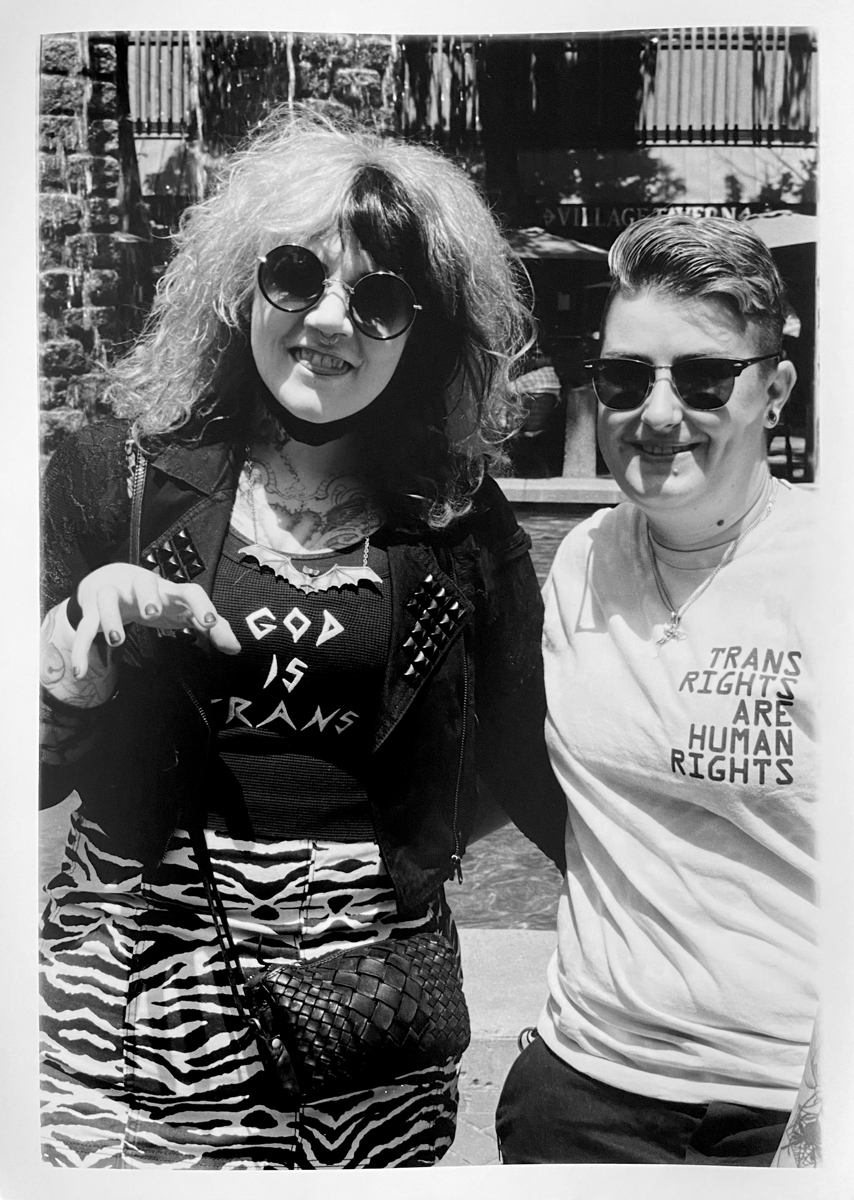Pride Street Portraits Posted On 18th August 2022 To Magazine & Stories

When I told my friend that I was going to write a piece explaining why I chose to shoot the Pride event in Salem, Massachusetts in black and white, she just laughed and told me to get on my soapbox. I'm not sure what a soap box is but if it helps me explain why I think that black and white film is incredibly important as a medium and not “old fashioned” as some think, then I'm on it. Bring me a soapbox!
How it Started
This started when I posted a photo on Instagram of a couple sharing a kiss at the Pride parade. Someone messaged me and said “it's too bad it's not in colour”. Which made me think, why is it too bad? What would it gain or how would it be better in colour? The answer that I would say is, nothing. Just because there is colour and possibly, as in a Pride event, lots of colour, doesn't mean that capturing it in black and white is sacrificing anything. In fact, I would argue, (I'm guessing this is where the soapbox comes in) that much can be gained by using black and white.
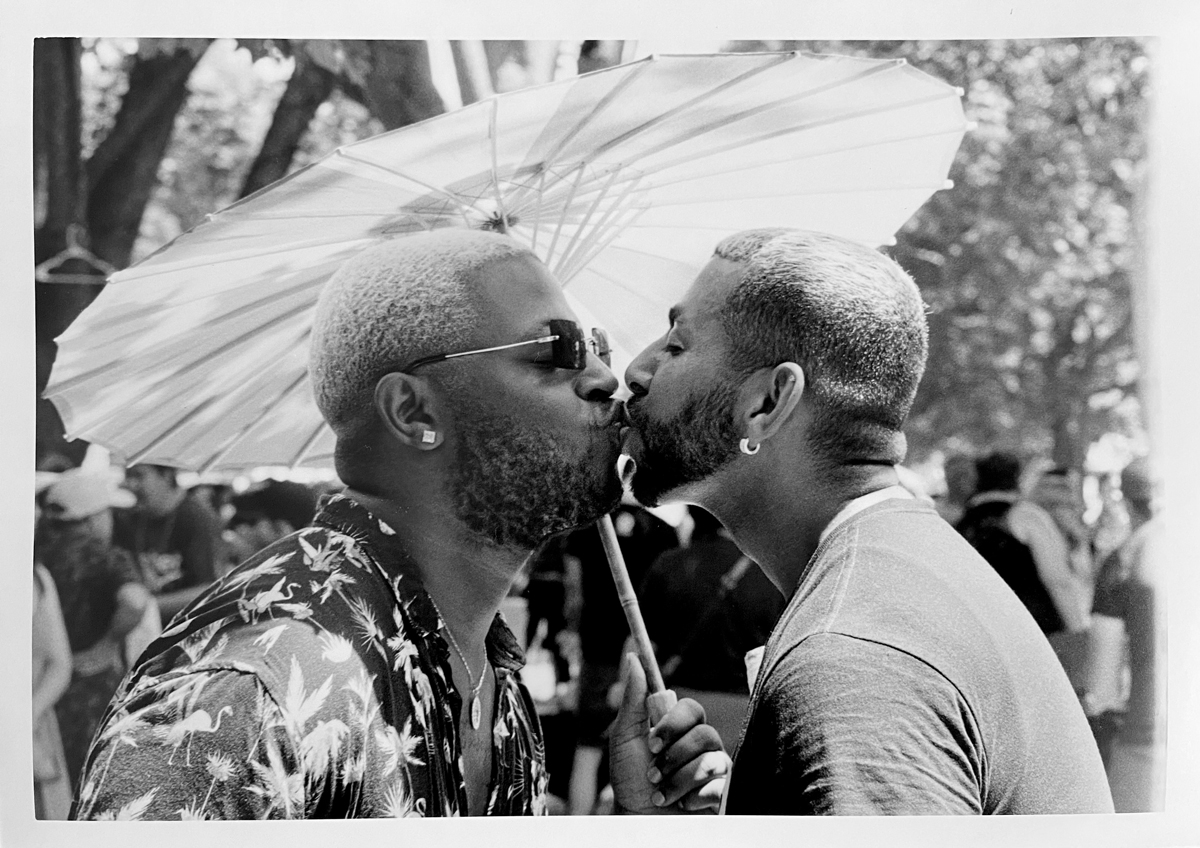
Blend In and Shoot from afar
So here we are. Back in Salem, with a 35 mm fully manual nikkormat camera, shooting ILFORD HP5+ 400, processing in Ilfotec dd-x and printing in the darkroom on ILFORD RC pearl paper.. I have practiced and practiced and yet, it's still hard to approach people and ask for their permission to take their photo. To me though, it's important to my process. I've tried to take more of a documentary view of things…stand back and capture what is unfolding in front of me, but I don’t connect to the images as much as I do if they are intentional. So I have to stop people and ask if it is okay if I take their picture.
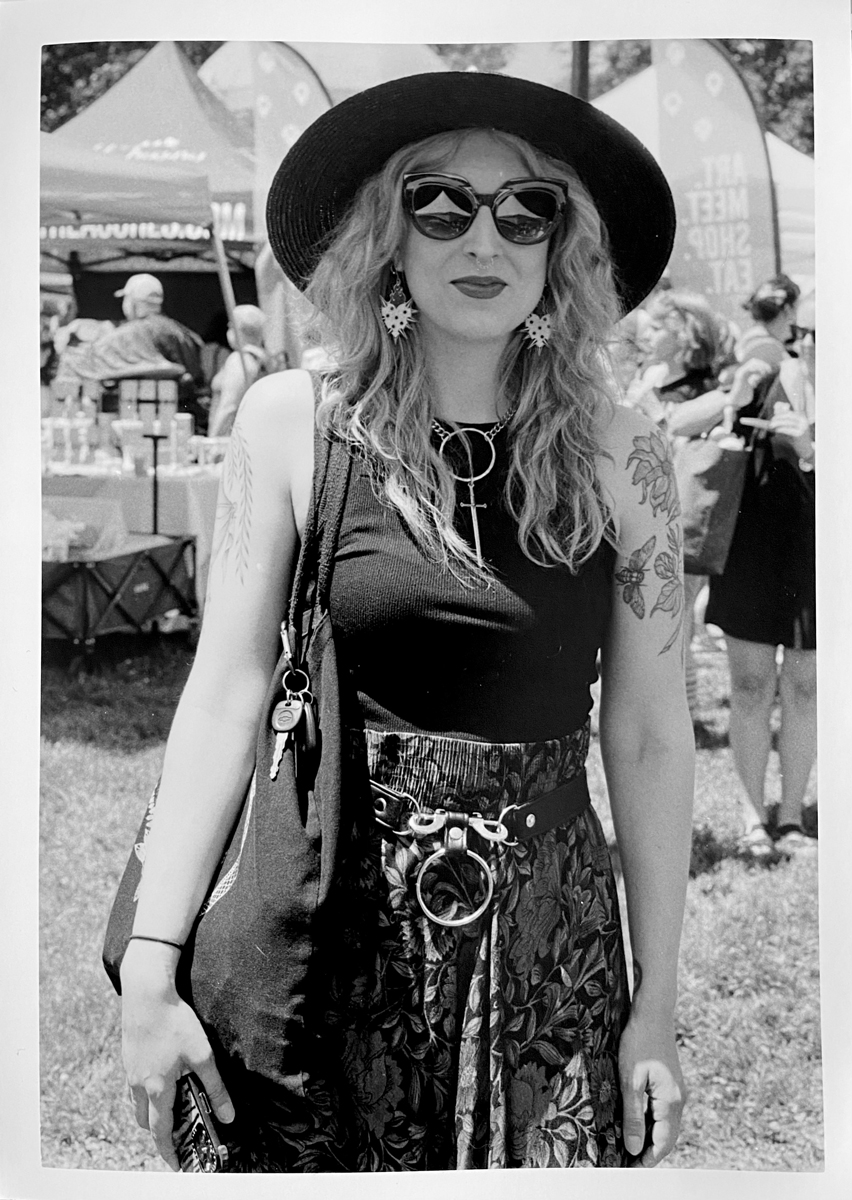
My Goal
My goal is to make a photo that shows the person's personality and shows how they want to be perceived. I try to avoid posing them because I feel as though I would lose a piece of them if I set them up. So I try to just stick to moving them to a slightly shady place if they are in the sun or asking them to hold still so that I can focus and capture a moment that was already happening organically. This is what happened in the two photos where I caught a kiss. I saw that happening and asked them if they would hold still so I could focus but I did not instruct them to kiss.
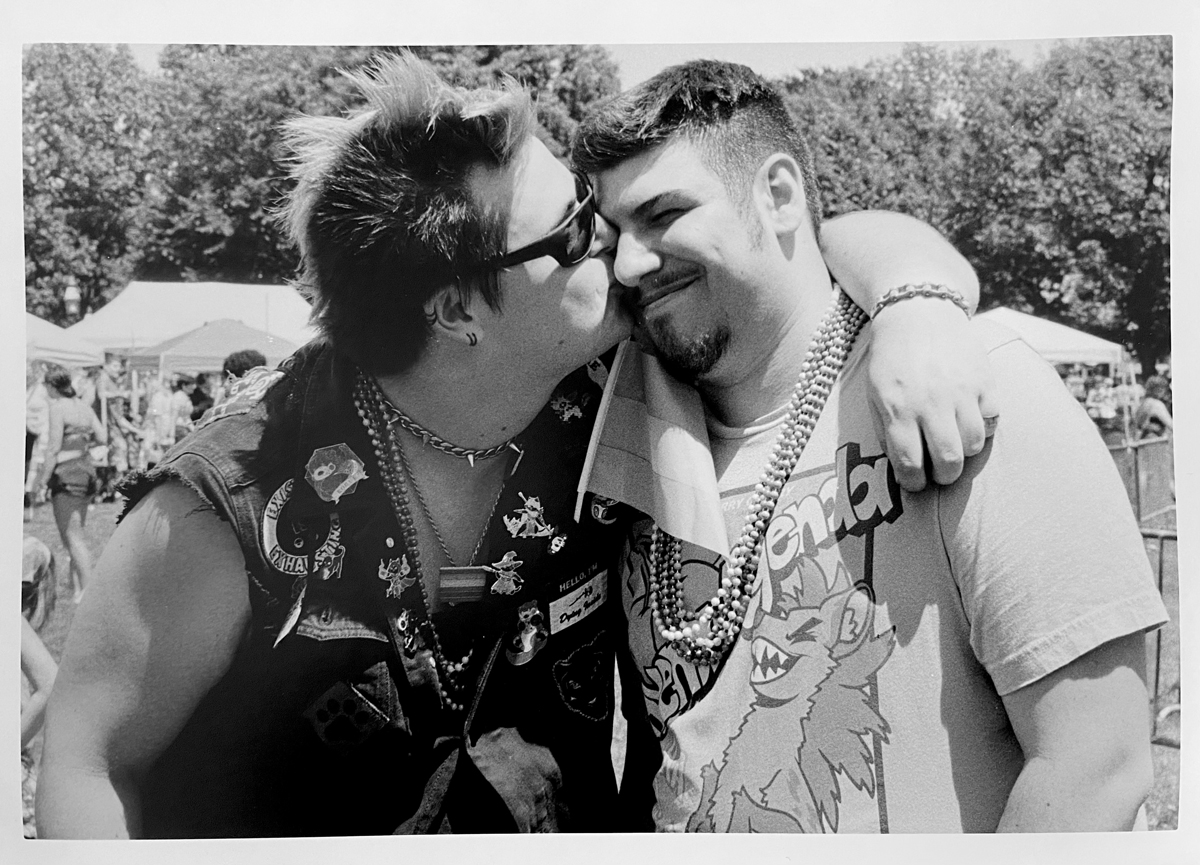
Hey I love Your Hat Can I Take Your Picture
I am learning how to be aware of the background but also be spontaneous which sounds way easier than it is. This happened with the person in the squid hat. I would not have set them up like that, with the tents in the background. However I was walking along and the person that they were with sort of flipped the hat up so that it was standing straight up. I said “hey I love your hat can i take your picture” and they said yes so I grabbed it. It all happened so fast. And the bright sunlight (not a cloud in the sky) and the fact that I was shooting with 400 meant that my lens was stopped all the way down and that put everything in focus. There were a few photos that I didn't use because the background was just too distracting. Overall, I ended up with some great images and some important lessons about shooting street portraits.

The Great Debate
Let's get back to the great debate “colour vs. black and white”. I know this argument has been going on for years and there are some strong opinions on it. Colour is better, black and white is better. The thing is, most arguments revolve around putting one medium down while lifting the other one up. I'm definitely not interested in putting down any form of photography. So here's my thoughts on why black and white is as important as colour. We notice colour and shape independently. In an article from Wellesley College on how the brain processes colour. A group of scientists found that the brain will process colour and shape simultaneously. You know that a banana is a banana because of its shape and the colour yellow. This happens when you see a photograph too. You see the colour and then assess what that colour belongs to.
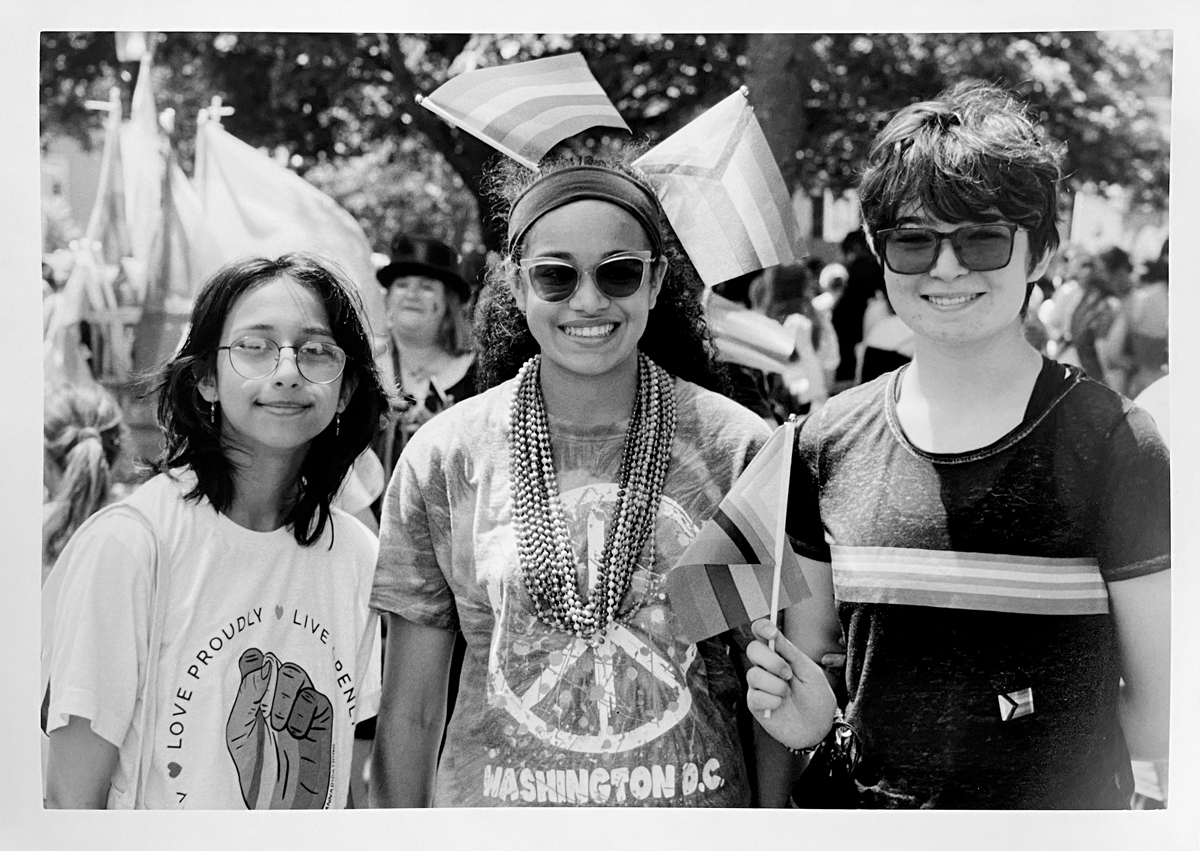
How?
How does that colour fit into what shapes, textures, people and objects are in the photograph? When you shoot in black and white, there is no colour to process. Your brain goes straight to the details and it distills the image to its basic elements. You notice someone's shirt, the texture of someone's hair, the posture of their body and the emotions portrayed. Black and white evens the playing field in your brain. You see and process everything as one whole instead of as parts of an image.
Neutral Monochrome Colour Palette
Another part of having a neutral monochrome colour palette is that color can also be polarizing. It is common to have a favorite colour and also dislike a colour. So when shooting in black and white you are taking out any colour bias that someone viewing the photo may have. Which again, will help to focus on the subject and the details of the photo.
In the photo of my daughter maple, she is the one blowing the bubbles. You don’t notice that the colour of her dress is pink (maybe you dislike pink) or that the watermelons are red, your eye goes straight to her eye. Which is hysterically magnified by the bubble that is directly in front of it. Like a tiny little Sherlock Holmes trying to investigate a mystery with a magnifying glass. In the photo of the person with the short, light coloured shirt on, there is a halo shaped light on their forehead. It's just beautiful and really draws your eye right to their face which has the most genuine smile. I am sure if you could see the colour of the beads and the flowers on their shirt that your eye would be drawn to those as well, dividing your attention.
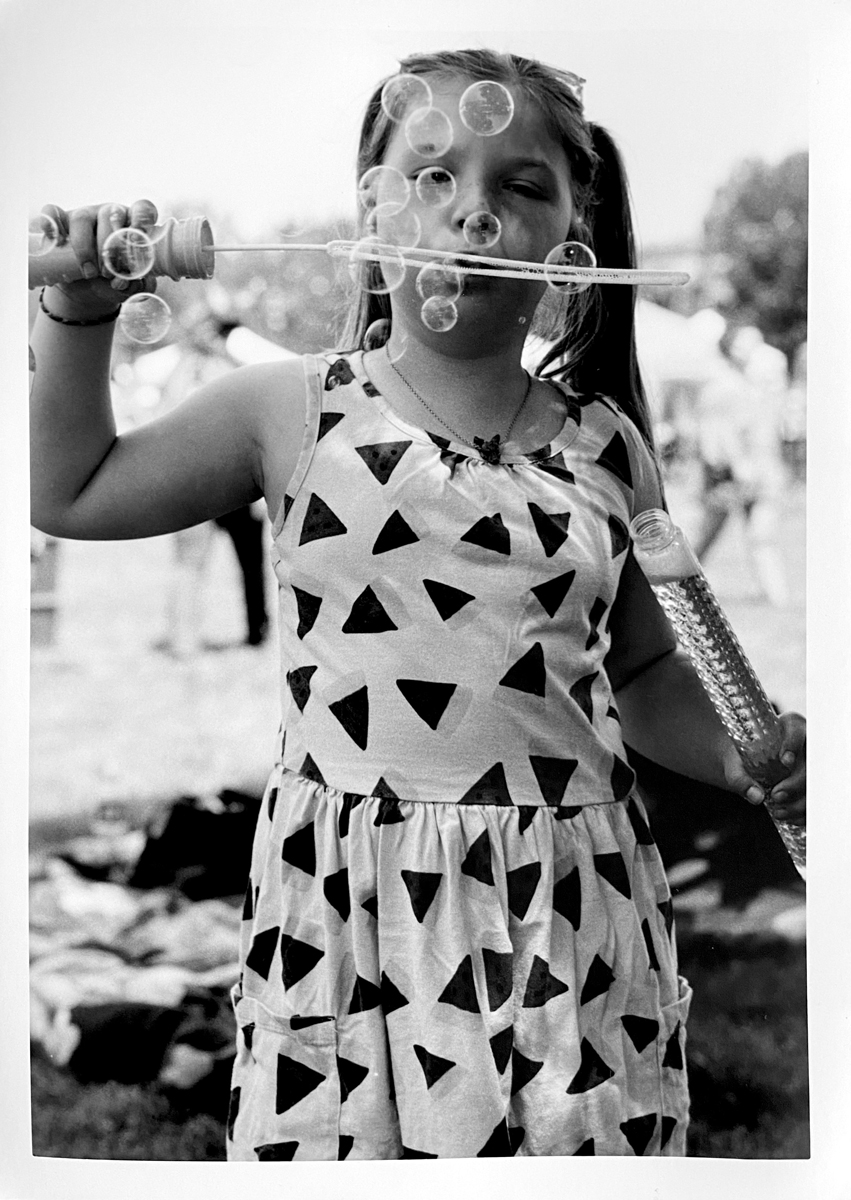
Texture
The textures in black and white photos are also so important. One of my favorite things to capture is texture. The shine on a drop of water, the texture of someone's clothing or hair, the puffiness of a cloud, when captured in black and white these things become so important. They draw you into the photo, almost compelling you to want to touch them.
I felt this way with the two people with the giant hats on. The silver chain hanging down on the black hat and the soft texture of the fabric of the white one make me want to reach out and just touch both the hats. If you could see that one person was a mushroom and the hat was red. Then the softness of the fabric would become yet another detail to process. So making the colour palette neutral shades of gray really frees up your eye to find other ways to view the image. The little dots on their face, the pointy ears, all things that are made more prominent by removing the colour from the photo. The photo with the parasol is so engaging because the softness of the light and shadow that is reflected from the trees sets the stage for the softness of the emotion captured in the kiss.
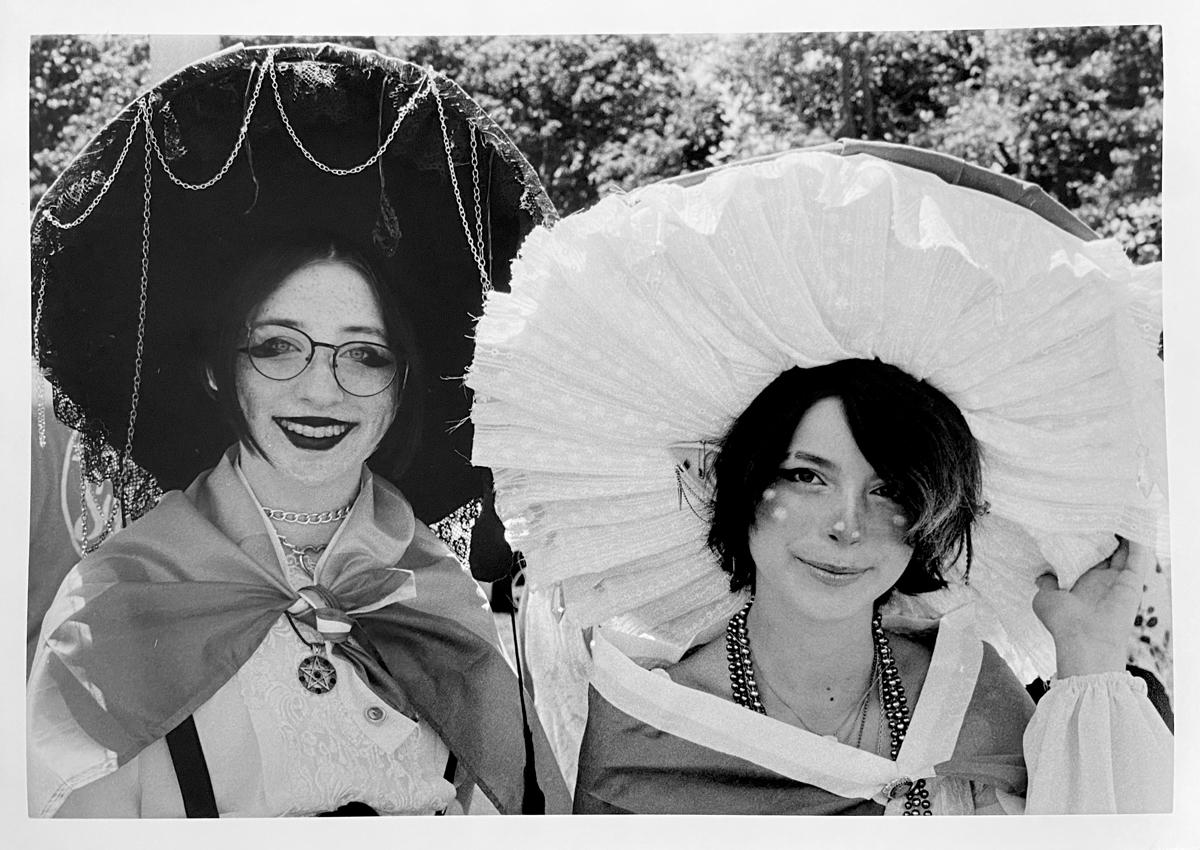
I know there are people reading this that are probably yelling at me through the screen. That's ok! We don't have to agree. This debate won't be resolved today and maybe should never be resolved. Feeling passionate about your art and photography is never a bad thing.
Images ©Jess Martineau
About The Author

Jess Martineau
Jess Martineau is a black and white film photographer, darkroom printer and part-time teacher who lives in Salem, Massachusetts.








